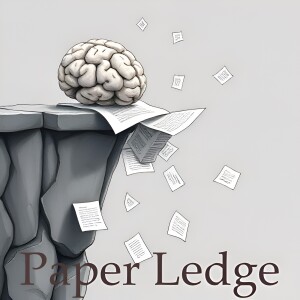

Biomolecules - A standard transformer and attention with linear biases for molecular conformer generation
Hey PaperLedge crew, Ernis here, ready to dive into some seriously cool science! Today, we're talking about drug discovery – specifically, how researchers are using AI to find the best shapes for drug molecules.
Think of it like this: a drug molecule needs to fit into a specific lock (a protein in your body) to do its job. The shape of the molecule is everything. Finding the right shape, or conformation, is a huge challenge. It's like trying to fold a super complex origami crane – there are tons of possibilities!
Now, traditionally, scientists have used specialized computer programs designed to understand these 3D shapes intrinsically. These are called "equivariant networks." But lately, a new kid has arrived on the block: non-equivariant transformer models.
These transformers are like super-smart language models, but instead of words, they're dealing with molecules. The benefit is that they are more general and can handle much larger datasets. The worry, though, has been that these models need to be massive to work well, like needing a giant brain to understand something that should be easier.
That’s where this paper comes in! These researchers found a clever trick to make these transformer models much more efficient. Their secret ingredient? Positional Encoding!
Imagine you're giving directions. You don't just say "go straight," you say "go straight for 10 blocks." The "for 10 blocks" is positional information. Similarly, this positional encoding tells the AI about the relationships between atoms in the molecule.
They used a specific type called relative positional encoding, kind of like saying "the coffee shop is closer than the library". They implemented this using a technique called ALiBi, which is like giving the model a little nudge to pay more attention to atoms that are closer together within the molecule's structure.
And guess what? It worked amazingly!
“A standard transformer model incorporating relative positional encoding for molecular graphs when scaled to 25 million parameters surpasses the current state-of-the-art non-equivariant base model with 64 million parameters on the GEOM-DRUGS benchmark.”Basically, a smaller model (25 million parameters) with this positional encoding outperformed a much larger model (64 million parameters) without it! That's a significant leap!
So, why does this matter? Well:
- For drug developers: This could speed up the process of finding new drug candidates and make it more efficient.
- For AI researchers: It shows that clever design choices can be just as important as throwing more computing power at a problem.
- For everyone: Faster drug discovery means potentially faster treatments for diseases!
This research suggests that we can unlock the potential of these transformer models without needing to build enormous, resource-intensive systems.
Here are a few things that popped into my head:
- Could this positional encoding technique be applied to other areas beyond drug discovery, like materials science or protein engineering?
- How far can we push this? Can we make even smaller models that perform even better with more advanced positional encoding?
- What are the ethical implications of using AI to design drugs, and how can we ensure fairness and accessibility?
That's all for this week's episode. Let me know what you think, learning crew! Until next time, keep exploring!
Credit to Paper authors: Viatcheslav Gurev, Timothy Rumbell
More Episodes
All Episodes>>Create Your Podcast In Minutes
- Full-featured podcast site
- Unlimited storage and bandwidth
- Comprehensive podcast stats
- Distribute to Apple Podcasts, Spotify, and more
- Make money with your podcast












